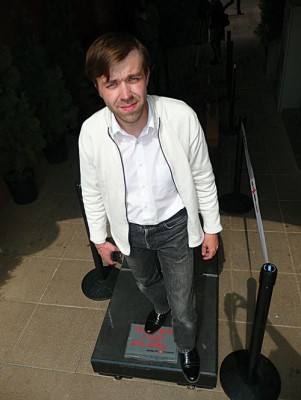

Galway Advertiser, June 03, 2010.
By Trevor Quinn
Located deep in New Zealand’s southern Alps, on the shores of crystal clear Lake Wakatipu, Queenstown has earned the right to be mentioned fleetingly as the planet’s number one adventure capital.
If you are an adrenalin junkie this exhilarating town on the beautiful South Island of New Zealand will be your mecca. Half a million tourists visit Q-town as it is affectionately known, with one thing in mind, hardcore extreme sports.
Queenstown is home to the bungy jump. It was here in 1988 that AJ Hackett started the first commercial bungy at Kawarau Bridge, and every year tens of thousands of converge on the bridges, highwires and ledges in wild anticipation of the ultimate challenge. While Kawarau was initially a steep 43 metre jump, when the Nevis Bungy opened in 1999 it was the highest bungy in the southern hemisphere standing at a death defying 134 metres.
The Nevis really has to be seen to be believed, and the jump will test your mental and physical boundaries in terrifying fashion. Most will agree however that the sense of accomplishment and dose of adrenaline fuelled satisfaction is immeasurable.
For those of the more nervous disposition there is a wide range of other high octane challenges that can be sampled. Tandem skydivers can combine the massive thrill of freefalling at 15,000ft and reaching a terminal velocity of 200km an hour, with the incredible parachuting views of lakes, glaciers and rugged mountain peaks. Action activities like the canyon swing, jetboating, white water rafting and paragliding give visitors an immense choice of exciting activities to indulge in.
Winter sports like skiing and snowboarding are popular in the surrounding snow capped peaks of Queenstown. The ski runs usually open at the beginning of June and the season lasts until well in to October. There are a number of nearby resorts that cater for the most vertically challenged beginners to the most ardent of experienced skiiers.
Unfortunately for me I was most definitely the latter, but everyone is put into groups with people of a similar level so the craic and the banter is fantastic. We travelled 65 minutes by bus to Cardrona ski fields which is renowned among skiers and snowboarders for its dry natural snow, and wide open slopes.
The price ranges from operator to operator but a day skiing in Cardrona including bus, rental and lessons cost about the equivalent of 70 euro per person, while two and three day packages can cost as much as 150 euro. It’s not cheap but you have to forget about price to a certain extent and live for the moment when in Queenstown.
If you are interested in some sightseeing, a trip to Milford Sound is a visual treat. English author and poet Rudyard Kipling once described it as the eighth wonder of the world, and it was recently voted the number one travel destination in the world by users of Tripadvisor. Milford Sound is a spectacular place located in the World Heritage Fiordland National Park and is rich in dense rainforests, waterfalls and spellbinding lakes. Mountainous cliffs peer out over lush rainforests.
The Maori once claimed that the extremely steep cliffs were created by a ‘titanic mason’. Cascading waterfalls plunge from sheer rock faces that rise vertically over 1,200 metres from the sea. Milford is the only fiord which is accessible by road, and although it is four hours from Queenstown by bus the stunning alpine drive makes the journey a breathtaking experience. When we arrived we took a memorable cruise on Milford Sound and enjoyed our lunch in the midst of the stunning scenery.
The nightlife in Queenstown has gained legendary status and while tourists and backpackers traditionally rise early to partake in the heart-pumping thrills that the region has to offer, visitors are in no hurry to bed once they have sampled the atmospheric nightspots. After dark the bars and late night restaurants come alive; Queenstown is synonomous for its party culture, and at bars like the World Bar and Altitude you are pretty much guaranteed a good night’s entertainment every night of the week. There is music to suit all tastes and lots of promotions and themed nights to entertain revellers.
The World Bar is covered in funky decor and the atmosphere is absolutely electric. There are live bands, loads of dance floors and hoards of happy go lucky people dancing on the specially positioned tables. Most people seems to be celebrating their successful bungy or first ever skydive every night. The World Bar is famous for serving cocktails in teapots and you could be forgiven for assumming that the lively revellers are no more intoxicated than your granny after an afternoon brew but this would be a a big miscalculation!
After the late night shenanigans, where better to go in Q-town than Fergburger, who modestly claim they serve up the best burger in the southern hemisphere. Fergburger has gained a formidable reputation for delicious fast food. The establishment has over 100 fan pages on networking site facebook, they make everything made from natural ingredients and their burgers are big enough to stuff the mighty Jonah Lomu.
With the rugby world cup looming next year, Queenstown has plenty to offer, and it should be top of every Irish visitors itinerary when visiting New Zealand.



 Nuala Ward -
Nuala Ward -  Deputy mayor Marciel with a sample of the power sensor.
Deputy mayor Marciel with a sample of the power sensor.